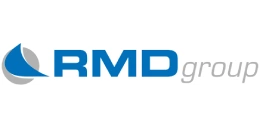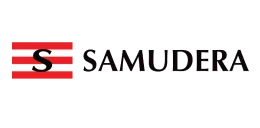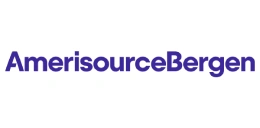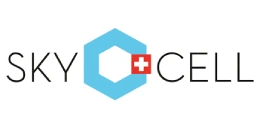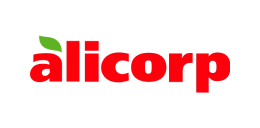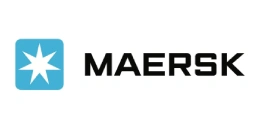How to Set Up a Paper Bag Manufacturing Business 2025: Cost, Machinery, Raw Materials

The shift away from single-use plastics has brought paper bags to the forefront of sustainable packaging solutions. Governments, businesses, and consumers increasingly demand alternatives that align with environmental standards and promote responsible production practices. In this changing scenario, the paper bag manufacturing industry presents a promising opportunity for investment and growth.
Establishing a paper bag production unit calls for strategic planning and an understanding of market trends, operational requirements, and regulatory frameworks. From selecting appropriate machinery to managing resources efficiently, each step contributes to building a competitive and resilient business. This guide outlines the essential phases involved in setting up a paper bag manufacturing plant, with practical details on investment needs, operational workflows, and market positioning.
The Growing Demand for Paper Bags: A Profitable Opportunity
Restrictions on plastic usage have accelerated the transition to eco-friendly packaging solutions. Governments across continents have imposed bans and levies on plastic carry bags, driving retailers and manufacturers to adopt sustainable substitutes. Paper bags have emerged as one of the most viable options due to their biodegradability and versatility.
Brands, from small local businesses to large retail chains, increasingly rely on paper bags to reinforce an environmentally responsible image. Supermarkets, fashion outlets, bakeries, and e-commerce platforms use custom-designed paper bags to offer both functionality and branding. Luxury brands, in particular, invest in high-quality paper bags to add value to their packaging and enhance the customer experience.
Rising environmental awareness among consumers has also fueled this demand. Studies indicate that customers are willing to pay more for products packaged responsibly. As a result, demand for paper bags spans industries and regions, providing a stable market with the potential for long-term growth.
New business entrants benefit from relatively simple production processes compared to other manufacturing sectors. A well-positioned paper bag unit can cater to local retail needs, supply bulk orders for supermarkets and food chains, or secure contracts with online retailers. With proper market positioning and a consistent supply of quality products, a paper bag manufacturer can tap into an expanding market that shows no signs of slowing down.
Market Research and Business Planning:
Before allocating funds or selecting machinery, a well-defined business plan and detailed market study provide the groundwork for a viable venture. Paper bag manufacturing may appear straightforward, but success depends on understanding supply, demand, competition, and operational challenges in the target market.
Identifying the Target Market
A clear understanding of end users guides production capacity and product design. Common buyers include retail outlets, grocery chains, shopping malls, restaurants, bakeries, gift stores, and e-commerce brands. Some clients require standard grocery bags, while others demand custom sizes, printed logos, or premium designs. Clarifying the customer profile helps determine machinery specifications, raw material grades, and pricing strategies.
Competitor Analysis
Mapping out established players clarifies gaps in product quality, pricing, or service. Studying local competitors highlights strengths and weaknesses in their operations. Reviewing their product range, distribution methods, and branding can uncover areas to differentiate a new business—whether through faster turnaround, better print quality, eco-friendly certifications, or innovative bag designs.
Tracking Industry Trends
New developments in materials, printing techniques, and finishing options shape buyer expectations. Demand is shifting toward recycled paper, water-based inks, and biodegradable adhesives. Businesses able to adapt to such trends can position themselves ahead of conventional suppliers. Regularly following trade journals, attending packaging expos, and networking with raw material suppliers ensure that operations stay updated.
Preparing a Detailed Business Plan
The plan should define how the business will function over its initial years. It must address ownership structure, mission, and scope of operations. Essential components include:
- Executive Summary: A snapshot of the business vision, product scope, and revenue goals.
- Company Details: Name, legal structure, location, and an outline of operational capacity.
- Product Portfolio: Types of paper bags to be manufactured—flat bags, satchel bags, shopping bags with handles, or customized luxury variants.
- Market Positioning: Insights from market and competitor analysis, expected demand, and marketing channels.
- Marketing and Sales Strategy: Planned advertising, promotional partnerships, digital presence, and sales targets.
- Financial Forecast: Start-up capital required, projected sales, fixed and variable costs, break-even point, and funding sources.
- Operational Plan: Staffing needs, workflow chart, machinery layout, and logistics.
Lenders, investors, and government agencies often require a robust business plan to evaluate viability. An organized plan clarifies the project’s scope and acts as a guide for all subsequent stages. Once the planning phase is secure, the next logical step is ensuring compliance with all legal and regulatory requirements.
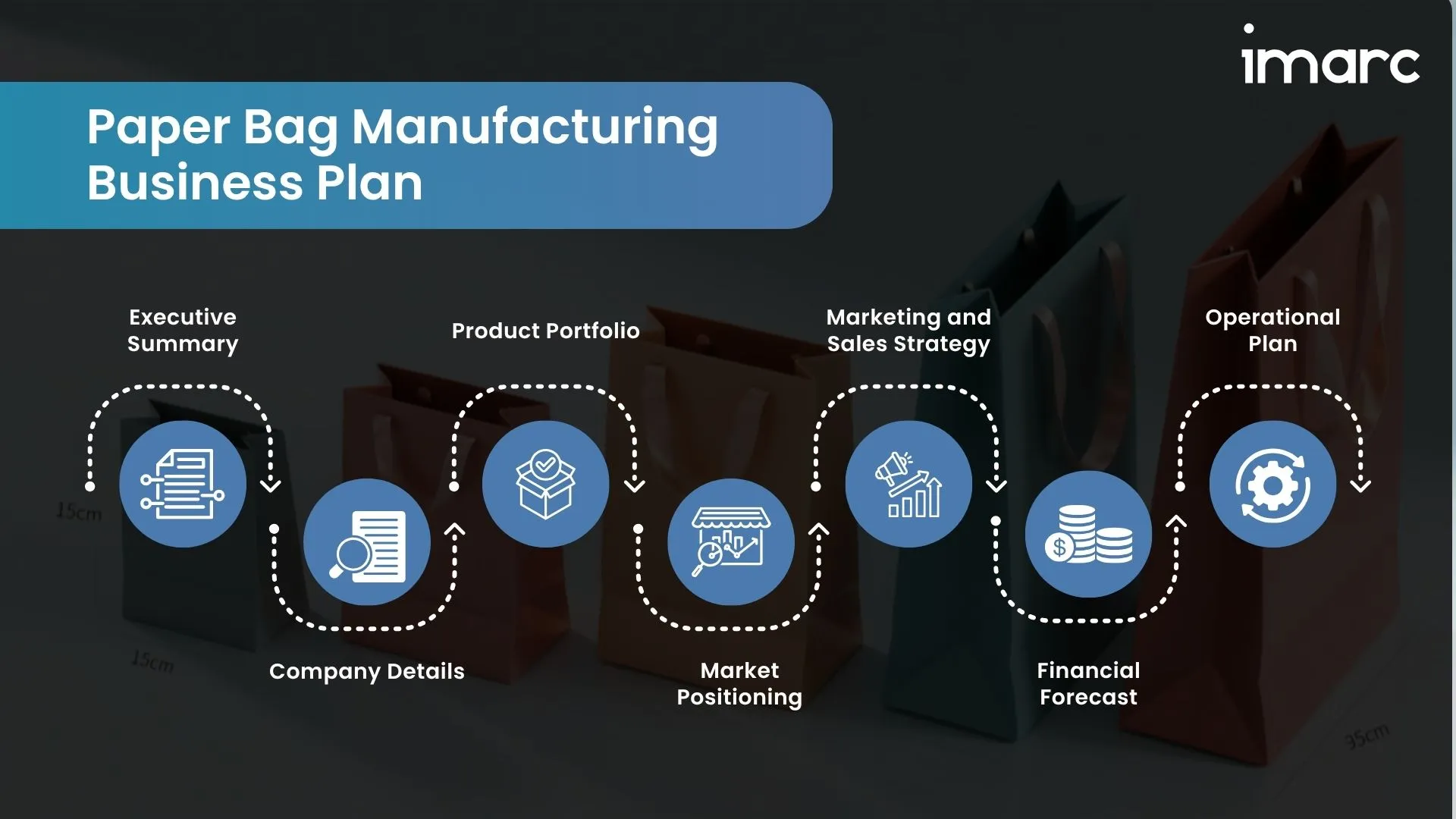
Legal and Regulatory Requirements:
Compliance with statutory requirements protects the business from operational delays and penalties. Overlooking this phase can cause interruptions that affect production and customer commitments. Setting up a paper bag manufacturing plant requires registration, licensing, and adherence to environmental standards.
Choosing the Right Legal Structure
Selecting an appropriate legal structure defines how taxes are filed, how profits are distributed, and how liabilities are managed. Small-scale manufacturers often opt for sole proprietorships or partnerships due to simple compliance requirements. Medium to large operations usually benefit from forming a private limited company or a limited liability partnership (LLP), which offers more credibility and access to funding.
Mandatory Registrations
After finalizing the legal structure, the business must be registered with the relevant government authority. Common steps include:
- Business Registration: Obtain a Certificate of Incorporation for a company or a business registration certificate for sole proprietorships or partnerships.
- Tax Identification: Apply for a Permanent Account Number (PAN) and Goods and Services Tax (GST) registration to comply with tax obligations.
- Professional Tax Registration: Required in many regions if the business employs staff.
Licenses and Permits
Manufacturing units must hold the correct permits to operate legally and sustainably:
- Trade License: Issued by local municipal authorities to grant permission for commercial activities.
- Factory License: Required if the plant employs a minimum number of workers or uses specified levels of power and machinery.
- Pollution Control Certificate: Paper bag production generates minimal waste compared to other industries, yet a clearance from the local Pollution Control Board may be mandatory. This ensures the manufacturing process does not breach environmental norms.
- Fire and Safety Compliance: Local fire departments may inspect premises to verify safety standards. Installing fire extinguishers, emergency exits, and training staff in safety protocols are part of this compliance.
Intellectual Property Considerations
Businesses offering custom designs or branded packaging should protect their intellectual property. Registering logos or unique bag designs helps prevent unauthorized use by competitors.
Maintaining Compliance
Annual renewals, timely tax filings, and maintaining updated records are essential to remain compliant. Many businesses appoint legal advisors or consultants to handle periodic paperwork and communicate with government departments.
A well-prepared legal foundation safeguards operations and strengthens the reputation of the business with customers and partners. With registrations and approvals in place, the next priority is securing a suitable location and designing an efficient manufacturing setup.
Setting Up the Manufacturing Unit:
The manufacturing unit forms the backbone of the entire operation. A functional, well-organized plant ensures smooth production flow, optimum use of resources, and consistent product quality. Selecting the right location, designing an efficient layout, and arranging essential utilities are critical during this phase.
Selecting an Appropriate Location
Accessibility and infrastructure are deciding factors when choosing a site. The location should have:
- Transport Connectivity: Easy access to suppliers and buyers reduces logistics costs. Proximity to highways, ports, or industrial hubs provides an advantage for both incoming raw material and outgoing finished goods.
- Industrial Zoning: The premises should be within an area designated for industrial activity to avoid future zoning disputes or restrictions.
- Availability of Utilities: Continuous power supply and adequate water availability are fundamental for running machines and ensuring a stable production cycle.
Rural industrial estates and smaller towns often offer lower land costs, government incentives, and skilled local labor, making them attractive for small to medium plants.
Estimating Space Requirements
The total space needed depends on planned production capacity and machinery specifications. A typical layout covers:
- Raw Material Storage: A designated area for storing paper reels, adhesives, inks, and packaging materials in a dry, protected environment.
- Production Floor: Sufficient space for machinery installation, operator movement, and maintenance access.
- Finished Goods Storage: Shelving or racking for storing ready-to-ship bags, sorted by size and order batches.
- Administrative Block: Offices for management, sales, and accounting functions.
- Loading and Unloading Bay: Smooth movement of goods in and out requires covered areas for trucks and forklifts.
Utility Arrangements
The plant should have robust utility connections:
- Power Supply: Machines require consistent voltage and backup power arrangements, such as generators, to prevent downtimes.
- Water Supply: Although paper bag production consumes limited water, supply is still required for certain cleaning processes and for staff facilities.
- Waste Disposal: Proper systems must be in place for handling and disposing of paper scraps, printing ink waste, and other residues in line with local regulations.
Workflow Layout and Safety
A logical arrangement of machinery and workstations reduces material handling time and prevents bottlenecks. The production line should enable a smooth transition from raw material input to finished bag output, with clear pathways for workers and goods. Installing adequate ventilation, emergency exits, fire extinguishers, and safety signage is necessary for regulatory compliance and worker wellbeing.
By planning the manufacturing unit with careful attention to layout, utilities, and safety, businesses create a reliable base for efficient production. With these foundations in place, the next step involves selecting and installing the right machinery and understanding the technical aspects of paper bag production.
Understanding Paper Bag Manufacturing Technology and Machinery:
Modern paper bag production relies on advanced machinery and refined processes to deliver consistent quality at competitive costs. Investing in the right technology directly influences production capacity, labor requirements, and product range.
The Paper Bag Manufacturing Process
The standard production process includes several integrated stages:
- Paper Feeding: Large rolls of Kraft or other paper are mounted on the machine. The paper feeds automatically, ensuring uninterrupted operation.
- Printing: If branding or design elements are required, the paper passes through a flexographic or offset printing unit. High-speed printing ensures clear logos and designs without smudges.
- Folding and Gluing: The printed paper moves through a section where it is folded into a tube shape and glued at the seam. This determines the width and length of the finished bag.
- Cutting: The continuous tube is cut into individual bag lengths according to the desired size.
- Bottom Forming: The base of each bag is folded, glued, and pressed to form a sturdy bottom that can carry weight without tearing.
- Handle Attachment: For carry bags, handles are attached either manually or by automatic handle-pasting machines. Options include flat paper handles or twisted rope handles.
Automation reduces manual errors, increases production speed, and allows manufacturers to handle bulk orders efficiently.
Types of Paper Bag Making Machines
Selecting machinery depends on production volume, product variety, and budget constraints. Common options include:
- Fully Automatic Paper Bag Making Machines: These machines integrate feeding, printing, folding, cutting, bottom pasting, and handle fixing. Minimal operator intervention is required apart from loading raw material and quality checks. Suitable for large-scale production units catering to supermarkets, retail chains, or export orders.
- Semi-Automatic Machines: These systems handle core processes automatically but may need manual assistance for tasks like handle attachment or final finishing. Semi-automatic setups are cost-effective for small to mid-sized operations and allow flexibility for customized orders in smaller batches.
- Specialized Printing Machines: Some units invest in standalone flexographic or offset printing machines for high-quality multicolor prints, especially when servicing premium or branded clients.
Factors to Consider When Choosing Machinery
When evaluating equipment, key aspects include:
- Production Capacity: Machines come in different speed ranges. Selecting capacity based on estimated order volume prevents underutilization or excessive idle time.
- Bag Types: Some machines are designed for flat bags without handles, while others support satchel bags, square-bottom bags, or bags with handles.
- Quality of Output: Reliable machinery ensures precise folding, strong gluing, and sharp printing. Inconsistent performance leads to product wastage and dissatisfied customers.
- Maintenance and Support: Machinery should be easy to service, with readily available spare parts and technical assistance from the supplier.
- Energy Efficiency: Modern machines with energy-saving features reduce operational costs in the long run.
Selecting reputable suppliers, verifying machine demonstrations, and reviewing after-sales support agreements are prudent steps before placing an order. Once the machinery is finalized, attention shifts to securing a stable supply of high-grade raw materials that form the core of every finished paper bag.
Sourcing High-Quality Raw Materials:
The durability and appeal of finished paper bags depend heavily on the quality of raw materials used. Reliable sourcing not only supports consistent production but also influences brand reputation among clients who expect strength, finish, and eco-friendliness.
Types of Paper
The primary material is paper, available in different grades and specifications based on the end use:
- Kraft Paper: Widely used due to its strength, tear resistance, and recyclability. Available in brown and white varieties, it suits standard grocery bags, shopping bags, and industrial packaging.
- Bleached Paper: Preferred for luxury bags or premium packaging where aesthetics are vital. It offers a clean, crisp look and holds printed designs well.
- Recycled Paper: Increasingly popular with environmentally conscious brands and consumers. Although slightly lower in strength compared to virgin Kraft, modern recycled grades can meet many retail requirements.
Paper reels are sourced in various grammages, usually ranging from 40 GSM to 120 GSM, depending on the bag’s intended weight capacity.
Other Essential Raw Materials
In addition to paper, a paper bag unit typically requires:
- Adhesives: High-quality, quick-drying adhesives ensure strong seams and secure bag bottoms. Water-based glues are commonly used for their safety and environmental compliance.
- Printing Inks: Non-toxic, eco-friendly inks produce clear branding and designs. Flexographic and offset printing inks vary, so compatibility with the printing system is necessary.
- Handle Materials: Flat paper strips, twisted paper rope, or cotton cords are common choices for bag handles. The selection depends on customer preference and the bag’s load-bearing requirements.
Identifying Reliable Suppliers
Maintaining uninterrupted production demands stable, high-grade raw material supply. Key factors when selecting suppliers include:
- Consistency: Suppliers should deliver uniform quality across batches to avoid variations in bag strength or print finish.
- Volume Capacity: Vendors must match the manufacturer’s scale and be capable of fulfilling larger orders during peak demand periods.
- Certifications: Working with mills or dealers offering certified sustainable paper—such as FSC-certified sources—enhances credibility, especially for brands promoting eco-friendly packaging.
- Cost Competitiveness: Pricing affects overall production costs. Long-term supply contracts or bulk orders can help secure favorable rates.
Establishing relationships with more than one supplier reduces risks related to sudden shortages or transport delays. A transparent agreement outlining delivery schedules, payment terms, and quality standards protects both parties and minimizes production interruptions.
By securing quality raw materials through dependable partners, a manufacturer can produce paper bags that meet client specifications and support repeat business. With materials ready, the next priority is building a capable team to operate machinery and manage daily plant activities efficiently.
Building a Skilled and Motivated Team:
An efficient team forms the backbone of any manufacturing operation. Well-trained staff ensure machines run smoothly, quality standards are upheld, and orders are fulfilled on time. As the scale of production grows, a reliable workforce becomes increasingly vital for meeting delivery commitments and maintaining customer trust.
Key Roles in a Paper Bag Manufacturing Unit
Machine Operators:
These workers handle the core equipment. They load paper reels, monitor machine performance, adjust settings, and address minor issues to avoid stoppages. Operators should be trained in basic maintenance, safety standards, and troubleshooting.
Production Supervisors:
Supervisors coordinate the production floor. They schedule shifts, oversee operators, monitor output against targets, and ensure each batch meets required specifications. Supervisors also manage resource allocation to optimize efficiency.
Quality Control Inspectors:
Every batch must undergo quality checks to confirm that bags meet strength, size, and finish standards. Inspectors test seams, print clarity, and handle attachment where applicable. Regular checks help catch defects early, minimizing waste and rework costs.
Maintenance Technicians:
Routine servicing of machinery prevents breakdowns that disrupt production. Technicians inspect mechanical and electrical parts, manage repairs, and maintain spare parts inventories to avoid delays.
Warehouse and Logistics Staff:
Personnel handle storage of raw materials and finished goods. They organize inventory, prepare consignments for dispatch, and manage loading and unloading to keep operations flowing.
Administrative and Sales Staff:
Support functions include bookkeeping, procurement, client communication, order management, and sales outreach. A proactive sales team identifies new buyers, negotiates contracts, and builds long-term relationships with key clients.
Recruitment and Training
Hiring staff with relevant experience shortens the learning curve, especially for machine operators and maintenance teams. New recruits benefit from hands-on training provided by machinery suppliers or technical consultants. Training should cover:
- Safe machine operation
- Preventive maintenance routines
- Product quality parameters
- Emergency procedures and safety drills
Regular refresher training keeps the team updated on new techniques and standards.
A committed workforce operating under clear systems ensures that the manufacturing unit runs without disruptions. With machinery, raw materials, and a capable team in place, the next focus area is understanding the cost structure for setting up and running the plant effectively.
Understanding the Paper Bag Manufacturing Plant Setup Cost:
Estimating the full cost of establishing a paper bag unit is essential for budgeting, securing funding, and setting realistic financial targets. Total expenditure can vary significantly depending on production scale, machinery choices, location, and staffing plans. Costs generally fall under two main categories: capital investment and working capital.
Capital Investment
Machinery and Equipment:
The machinery is the single largest cost component. Fully automatic paper bag making machines cost substantially more than semi-automatic units but deliver higher output and lower labor dependency. Additional machines for printing, handle pasting, and finishing may also be needed if the business offers customized or premium bags.
Land and Building:
Expenses for acquiring or leasing a suitable plot, constructing or renovating factory sheds, and setting up administrative offices fall under this head. Costs vary widely based on region, plot size, and local industrial rates.
Installation and Setup:
Machinery installation, electrical wiring, and civil modifications to accommodate machines safely must be factored in. Expenses may also include foundation work to handle equipment weight and vibration.
Pre-Operative Expenses:
These cover company registration fees, license and permit charges, initial marketing materials, legal consultations, and other administrative requirements before production begins.
Working Capital
Raw Materials Inventory:
An initial stock of paper reels, adhesives, inks, and handle materials is needed to launch production smoothly. Maintaining a buffer stock reduces the risk of unexpected supply chain delays.
Staff Salaries and Wages:
Monthly wages for operators, supervisors, quality control staff, and administrative personnel must be budgeted. This covers the period until the unit generates steady revenue.
Utilities and Maintenance:
Regular expenses include electricity, water, repairs, and routine servicing. Power costs are significant since machines often run multiple shifts to meet bulk orders.
Marketing and Sales:
Budgeting for a website, promotional materials, advertising in trade directories, or participating in packaging expos helps generate leads. Engaging with wholesalers, retail chains, or distributors may require travel or demonstration samples.
A well-prepared cost breakdown helps entrepreneurs secure bank loans or investor backing and plan repayments realistically. Once costs are defined and funds arranged, the final phase focuses on marketing strategies to reach target customers and drive sales.
Marketing and Selling Paper Bags:
With production ready, the success of a paper bag manufacturing unit depends on how effectively its products reach buyers. An organized marketing strategy builds awareness, secures orders, and positions the business as a trusted supplier in a competitive market.
Building a Distinct Brand Identity
Packaging is more than functionality; it carries a message about quality and values. Many retailers and brands choose paper bags to strengthen their eco-friendly image. A clear, well-developed brand communicates reliability, environmental responsibility, and professionalism.
Key branding elements include:
- A memorable logo
- Consistent color schemes and typography
- Messaging that emphasizes sustainability and quality
- Packaging designs that can be customized for client branding
Investing in branded samples and an attractive catalog helps demonstrate production capabilities and design options.
Establishing an Online Presence
A professional website serves as a showcase and a direct sales channel. The site should display:
- Product specifications, sizes, and designs available
- Customization options, such as printing and handle styles
- Information about production capacity and turnaround times
- Certifications and sustainability credentials, if applicable
- Contact forms for inquiries and quotations
Active use of social media platforms helps build visibility. Sharing photos of finished products, behind-the-scenes glimpses of the production process, and client testimonials can attract new leads.
Participating in Trade Shows and Industry Events
Packaging expos, trade fairs, and industry networking events provide valuable opportunities to connect with wholesalers, distributors, and large retail chains. Face-to-face meetings allow businesses to demonstrate product quality, negotiate terms, and secure bulk contracts.
Displaying unique designs, eco-friendly certifications, or premium custom packaging can attract brand-conscious buyers seeking reliable suppliers.
Building Direct Sales Channels
A dedicated sales team plays a key role in identifying local retailers, supermarkets, bakeries, and e-commerce sellers. Cold calling, in-person visits, and sample drops are proven methods for initiating relationships.
Repeat orders often depend on delivering consistent quality and flexible service. Offering custom sizes, short lead times, or value-added services like logo printing strengthens long-term relationships.
Developing Distribution Partnerships
Distributors and wholesalers can expand market reach without requiring large in-house sales teams. Establishing clear agreements on minimum order quantities, pricing, delivery timelines, and payment terms ensures mutual benefit.
Targeting regions with plastic bag bans or higher environmental awareness increases the likelihood of consistent demand for paper alternatives.
Maintaining Customer Relationships
Sustained success relies on retaining clients through excellent service. Prompt response to inquiries, transparent pricing, timely deliveries, and openness to feedback all build trust and encourage repeat business.
Periodic check-ins, seasonal promotions, or discounts for large volume orders can help maintain strong ties with existing buyers and generate referrals.
By combining a recognizable brand, a visible online presence, targeted direct sales, and trusted distribution channels, a paper bag manufacturer can build a reliable customer base and position the business for steady growth in a competitive industry.
IMARC Group: A Reliable Partner for a Sustainable Venture
Establishing a paper bag manufacturing unit aligns sound business sense with the shift toward sustainable packaging. The industry’s growth potential is clear, but transforming an idea into a fully operational plant requires more than machinery and raw materials—it calls for accurate data, careful planning, and practical guidance at each phase. IMARC Group supports this journey with resources that help business owners plan, execute, and expand confidently. We provide resources and guidance for each stage:
- Clear Project Reports: Covering process flows, machinery, raw material needs, layout plans, capital costs, operating expenses, and financial forecasts—everything needed to build a clear plan.
- Trusted Market Research: Data on demand trends, price movements, and major buyers to shape sound business decisions and reduce risk.
- Tailored Advisory: Support in capacity planning, technology selection, feasibility analysis, market entry strategy, and supply chain partnerships.
- Post-Setup Support: Assistance with branding, positioning, and sales outreach to secure orders and build lasting customer relationships.
A well-structured paper bag business combines practical planning with steady execution. For a strong start, explore IMARC Group’s detailed project report or connect with a consultant to discuss specific plans and priorities.
Our Clients
Contact Us
Have a question or need assistance?
Please complete the form with your inquiry or reach out to us at
Phone Number
+91-120-433-0800+1-201-971-6302
+44-753-714-6104
